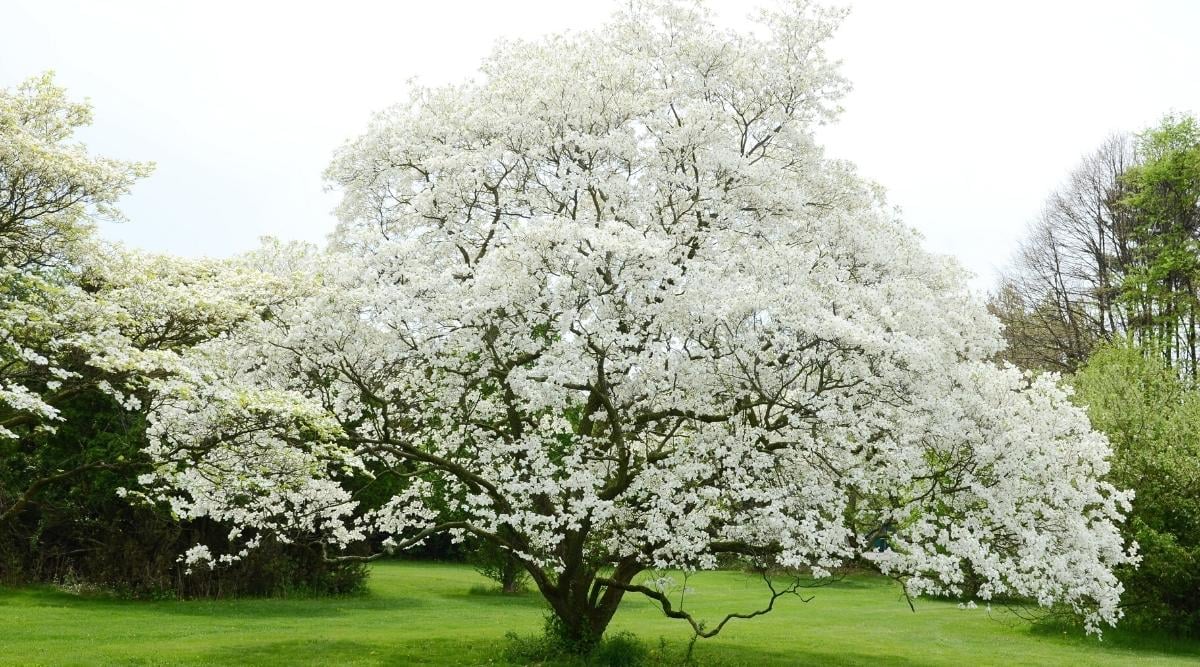Growing Money Plant Crassula Ovata : Care and Mainatainance tips
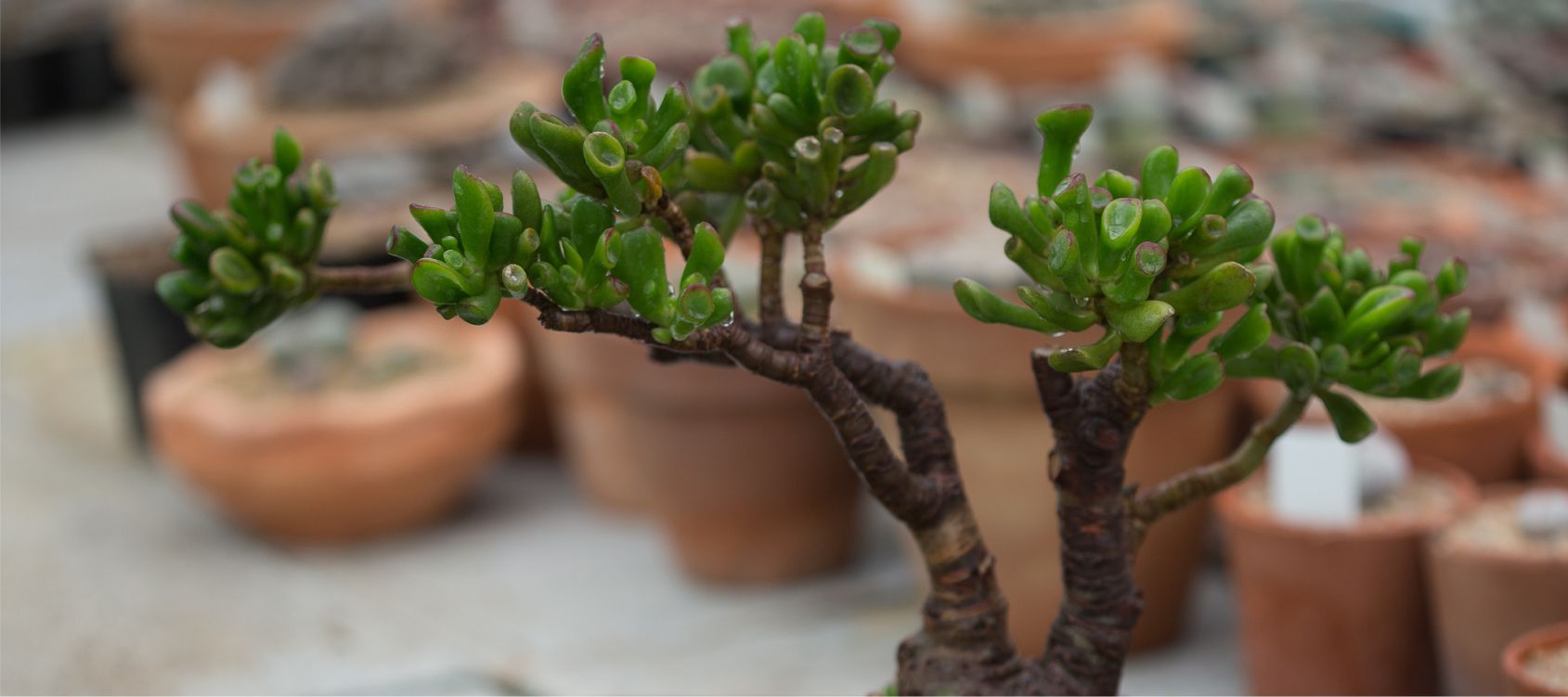
Table of Contents
The Crassula ovata sub-species of plants are known to people by many names. Jade Plant, Lucky Plant, and Friendship Plant are some of them. However, the most popularly used common name for this unique-looking plant- is “money plant”. It is a succulent sub-shrub which is native to South Africa and Mozambique. Its most distinguished feature is the fleshy jade green leaves.
There is not much to Crassula ovata care as the plant is very low-maintenance. It needs very little upkeep and can adapt to almost any kind of soil and temperature conditions. For this reason, the money plant is a good choice if someone is new to gardening.
In many traditions, this plant is said to bring luck and wealth to those who receive it, and hence it is also quite common to see the plant being exchanged as gifts on auspicious events.
Identifying Crassula ovata
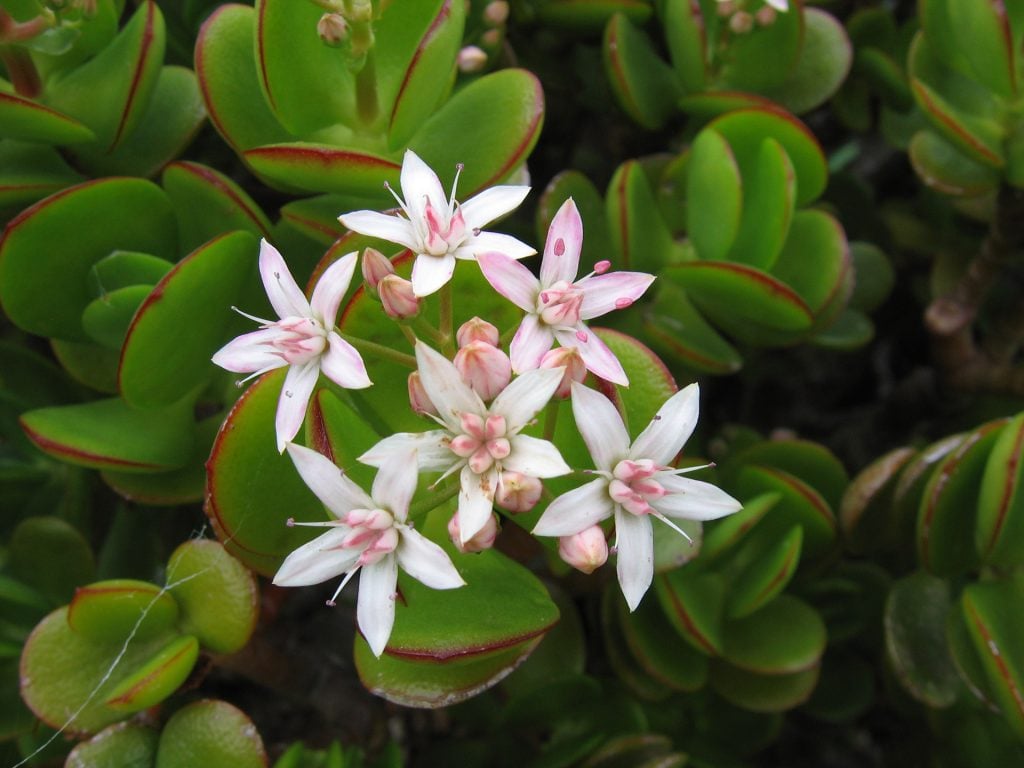
Money plants are often compared to bonsai trees because of their short and compact appearance. The leaves are thick and glossy that grow in opposing pairs along the length of the branches. Its nickname – Jade plant, is also from the leaves, which are a rich jade green in colour. By that time, they may appear yellow or with red-tinged edges if exposed to the sun for days on end. With age, the stems and leaves become woody and brown. The maximum height the plant reaches is about 2.5 metres, with a sturdy main branch. The foliage branches out and spreads as it grows, which makes the foliage at the top much more dense than at the base. Mature money plants are also seen to bear small white, pink or red flowers in the winter.
How & When To Care for Crassula Ovata Plant
As has been mentioned previously, this plant needs very little care and can adapt to its surroundings very easily. However, there are still some minimal steps that need to be followed.
How to Plant Crassula Ovata
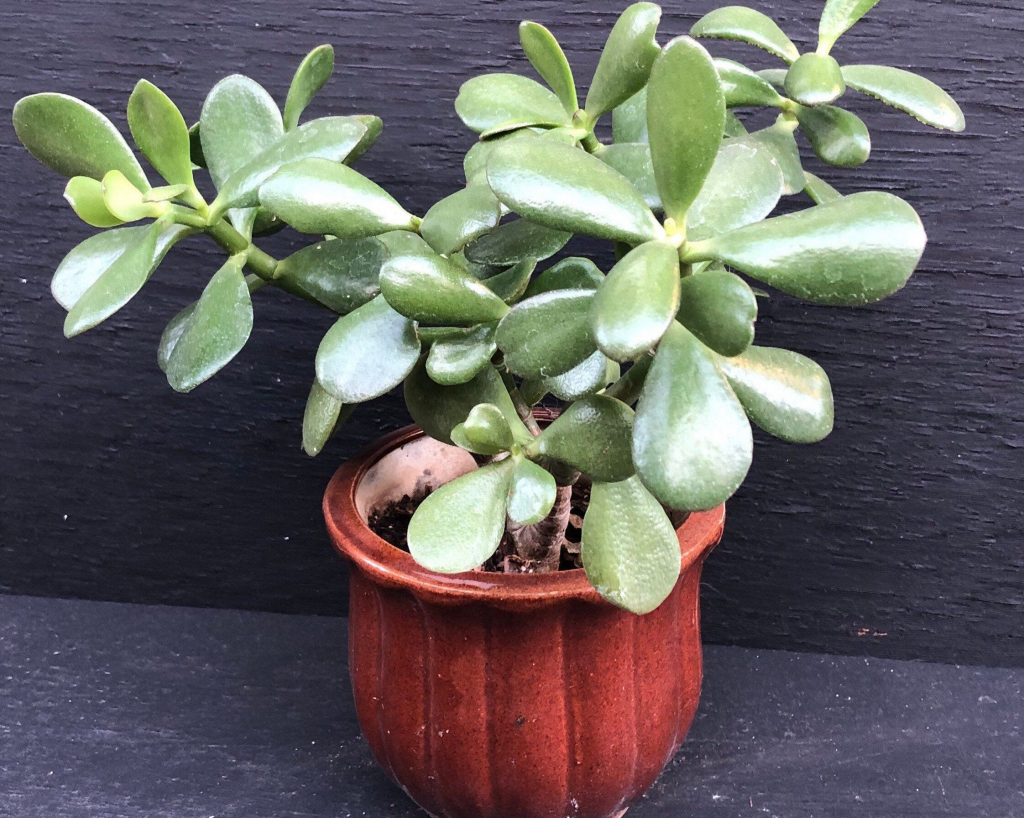
Summer or spring is the perfect time to sow the Money plant seeds. It should be initially planted into a container which can later be relocated to a permanent pot or the garden soil after the seeds have germinated. The container must be at least 4 inches in width and with many drainage holes. The seeds have to be kept an inch apart from each other, but there is no need to bury them. The soil has to be damp, not wet, and this entire set-up has to be covered with a plastic bag and kept in the bright sunlight. The bag has to be removed once a day to water the soil lightly.
You will see the seeds start to sprout with roots. The next step is simpler as you have to move the sprouted seeds into a larger and deeper pot and bury it lightly while surrounding the germinated seeds with draining soil. The plant will start to grow once the roots are well-established in the soil.
How to Water a Crassula Ovata Plant
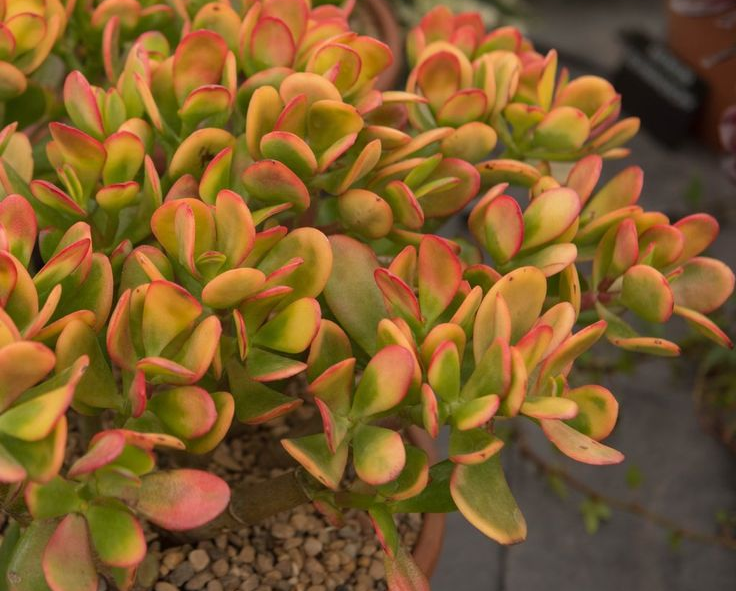
Unlike other plants, crassula ovata care does not need much watering. In fact, watering less is the preferred norm in the case of these plants. The only thing to remember is you need to keep an eye out for signs of the plant being underwatered, like drooping and drying leaves. There is no fixed schedule for watering as the weather condition may differ from place to place, but you should water the plant thoroughly at least once in seven days.
The best way to do so is to let the plant soak drench completely until you see water leaking from the drain holes of the pot. If your crassula ovata is planted directly into the soil, then you have to water it in moderation, as drainage will be a problem. After you are done watering, let the plant completely dry out by draining the excess water. If moisture accumulates at the roots, then it might rot. But if the plant needs more watering and starts to droop, you may have to water it more often. This is especially true in dry climates and summer months.
What Is the Suitable Soil Type for Money Plants
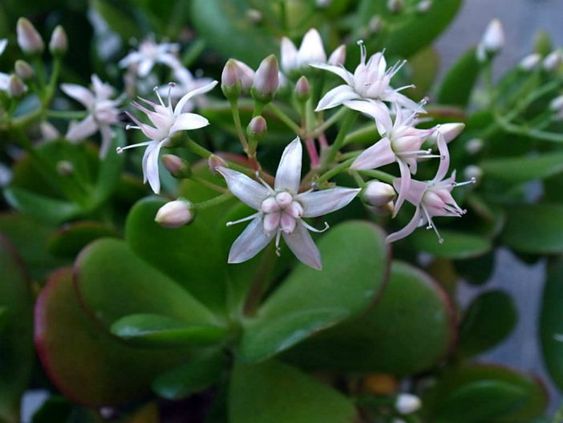
Soil is not a headache when it comes to Crassula ovata care and maintenance, as the sub-shrub variety is adaptable to any succulent-based soil or anything suitable for cacti. You will find pre-mixed soil for succulents at any related store. That is not the only option, as a suitable soil type can easily be arranged at home. Mix coarse sand with peat moss and potting soil in a 3:1:1 ratio.
What is ideal about this soil mixture is that it has the right amount of water retention as well as drainage. This will ensure that the plant is neither rotting nor drying up. Liquid feed fertiliser can be used once in spring and summer. The soil should be changed every two or three years, and this is especially applicable for potted money plants because the soil in the pot loose nutrients faster, and thus the plant should be repotted with new soil.
What Are the Ideal Temperature Conditions for Crassula Ovata Care
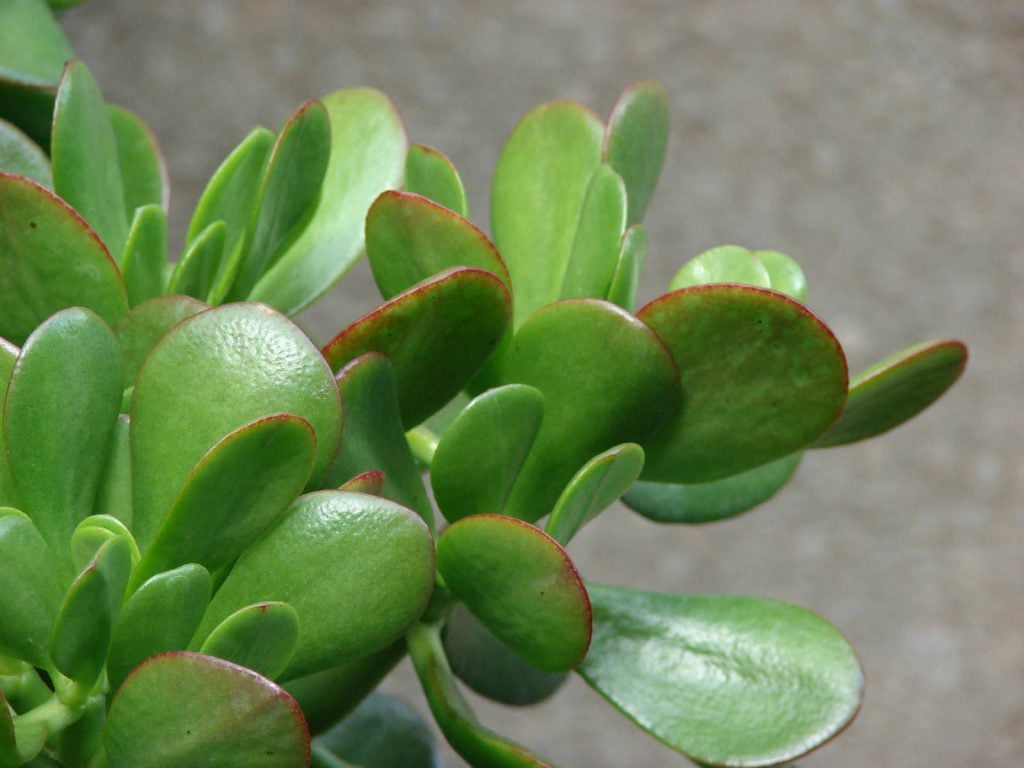
The reason why Jade Plants or Crassula ovata make such great indoor house plants is that they thrive in warm and dry temperature conditions. Between 55ºF and 75ºF (between 12 and 23ºC) is the perfect range of heat for them, and as for humidity, the ideal range is between 30% and 50%. In their natural habitat, however, these succulents are used to undergoing much higher temperatures as the climate in South Africa, and Mozambique is usually extremely dry and hot. This is why crassula ovata plants can also survive through occasional spells of drought.
Moreover, it is also important to know that money plants can still suffer from wrong temperature and humidity conditions. For example, if the leaves start curling, then it is an indicator of a very low temperature, and you must either raise the indoor temperature by a bit or relocate the pot to a more warm place. Similarly, other issues, such as wrinkly leaves, can happen due to underwatering, while limp stems and rotting roots can be caused by overwatering.
How to Fertilise a Crassula Ovata Plant?
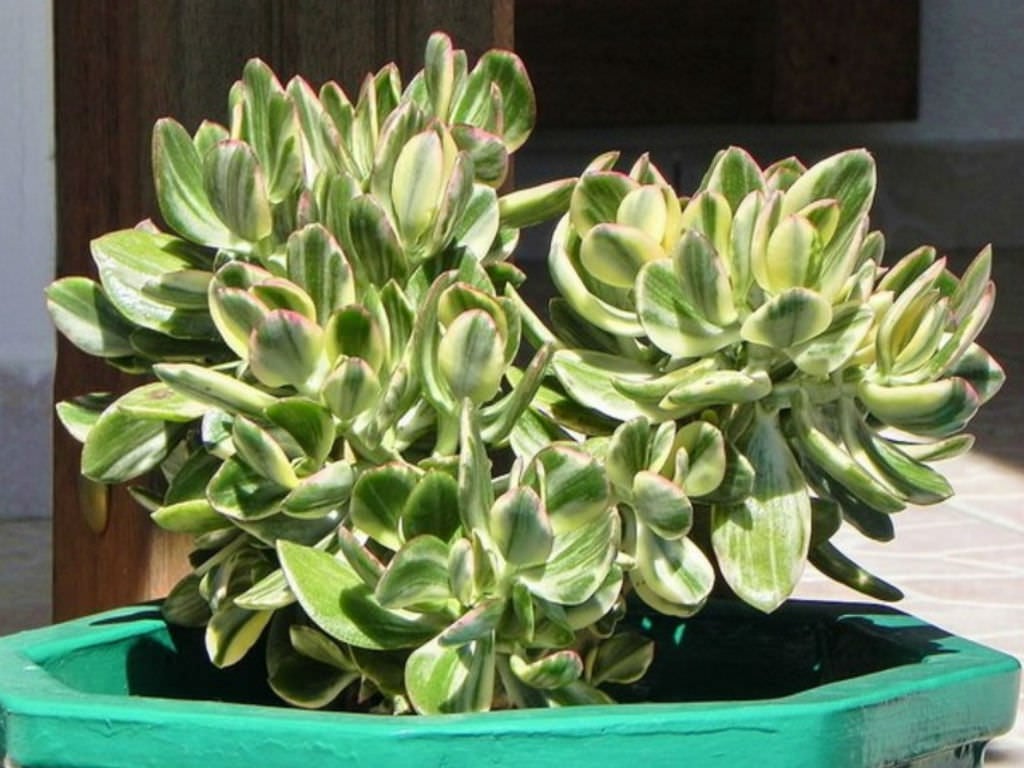
Fertilisers provide useful nutrients to all plants, and that is why this is an important step in the process of crassula ovata care. In its active growing period, the plant can be fed with fertiliser every one or two months. Commercial succulent fertilisers that are found at local or online stores are good enough to meet the nutritional requirements of money plants.
However, it is wise not to use fertiliser directly as money plants are quite self-sufficient. Succulents in general, and money plants in particular, do not need to be fed with compost material and fertilisers as much as other common house plants do, so the recommended way to feed money plants is to dilute the fertiliser to half its strength and then use it.
You have to be careful about excess salt residue from the manure accumulating in the soil, as it can cause the plant to rot. Make sure to wash the soil thoroughly a week or so after feeding the plant to prevent this from happening. You can do this by feeding and watering processes one after another and creating a consistent maintenance schedule.
How to Prune a Crassula Ovata “Money” Plant?
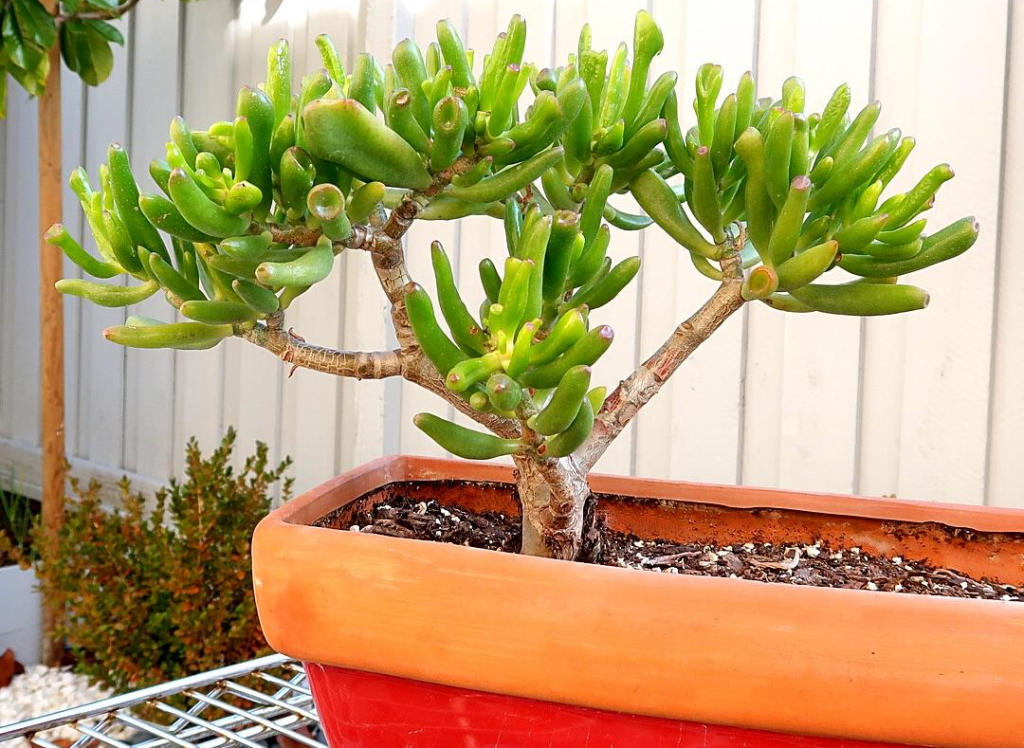
Pruning is a crucial step when gardening as it gets rid of rotten and destroyed parts of the foliage and helps the plantations to maintain shape, stability and aesthetics. Some plants need regular pruning and grooming, while some can do with a minimum amount of it. Money plants belong to the latter category as they do not need to be pruned as often and sometimes not at all. Most money plants maintain their shape as they spread out their foliage while growing, but exceptions can still happen, and the plants start to grow lop-sided. In such a case, of course, pruning is required, and you have to chop from the area where the stems begin to bend.
Branches with dying leaves can and should be chopped off to protect the health of the plant, as the rot may spread to the rest of it. Also, pruning can be performed to make the plants more manageable indoors. House plants are preferred to be short and compact, but 2 metres can be a lot to handle, and thus the plant can be pruned to a more convenient size. The pruning should be done at the beginning of spring when foliage gets new leafage. Some indoor money plants are also pruned in the bonsai pattern for their visual appeal.
How to Propagate a Crassula Ovata “Money” Plant?
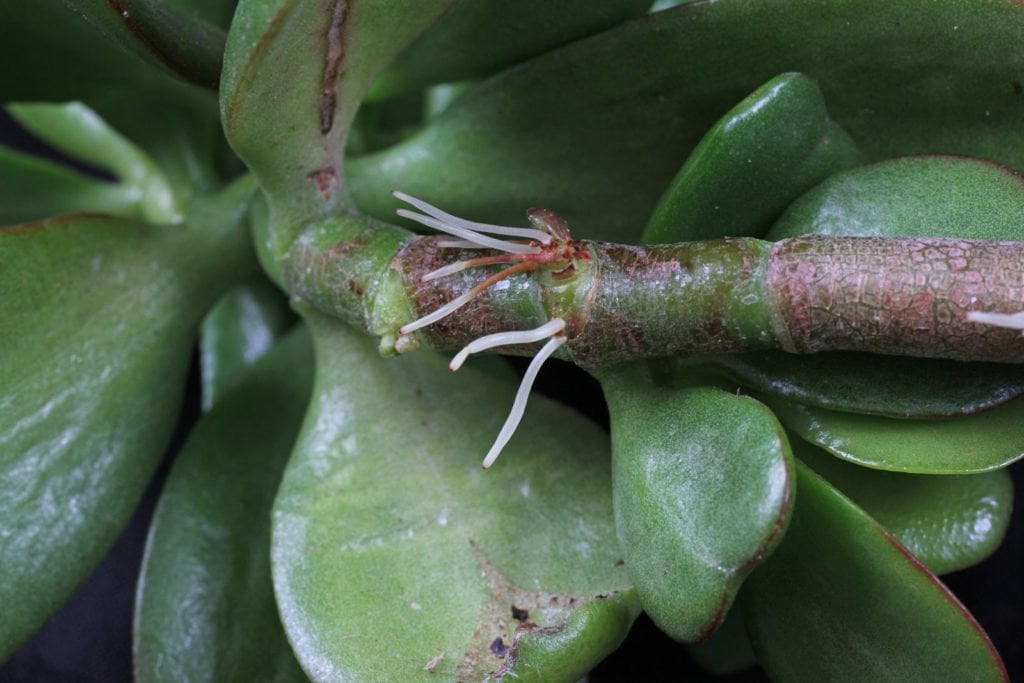
Crassula ovata plants are one of the easiest to propagate. It can be done in two ways- either from leaf or stem cuttings. We will discuss both.
From a Leaf
To propagate from a leaf cutting, follow the steps given below:
- Take a leaf from a healthy money plant and let it rest for a week on a paper towel in a warm spot until a callus forms on the surface.
- Fill a container with potting mix and stick the leaf inside with the callused end inside the mix. Place this pot in a warm and bright spot but not under direct sunlight.
- After a couple of weeks, you will see roots sprouting from the leaf. Water using a dropper or something with small holes and make sure not to disturb the roots while it fixes itself into the soil. Continue watering and drying the soil until the roots are well established.
- After a week or so, the roots should be deep enough, and you can plant this in a proper pot or your garden.
From a Stem Cutting
To propagate from a Stem cutting, follow the steps given below:
- Cut a 3-inch long stem from a healthy Crassula ovata plant. The stem should have at least two leaves on it. Place this on a paper towel and in a warm spot for a week and a half until you see a callus developing on the stem.
- Dip the callused end in a rooting hormone solution.
- Fill a container with potting mix and stick this stem into it while keeping the callused end inside the soil. Make sure the stem stands upright. You can support the stem by placing small rocks around it.
- Place this container in a warm and bright spot but not directly under the sun. After a week or two, you will see the first sight of roots coming out.
- Water the soil gently, not to disturb the root until it fixes deeply in the soil,
- Once the roots have been established, you can plant the stem and root into a permanent pot or in the garden.
Other Important Tips to Care for Crassula Ovata Plants
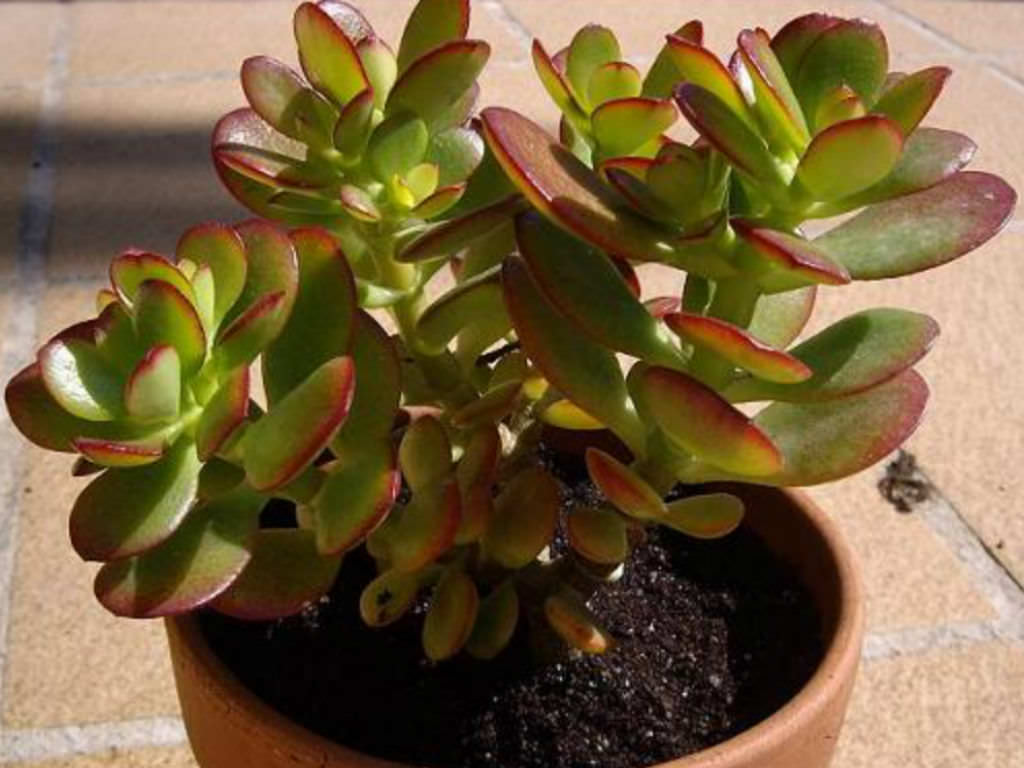
While money plants are eye-catching, they also seem to attract a lot of pests and mites, such as aphids, spider mites and mealy bugs. These feed on the foliage and can be hard to get rid of. The threat they pose is minimal, but still, if the issue is not addressed as soon as the pests are spotted, they will grow in numbers and cause significant damage to the plant.
Non-chemical treatments such as neem oil, peppermint oil, lavender oil and water mixed with liquid soaps are the best ways to deal with these bugs. In this way, you get to save your money plant from pest attacks as well as preserve the plant’s health from harmful chemicals found in pesticides.
Wrapping Up
All in all, the Crassula ovata sub-species is considered unique owing to several different reasons. The first of the list is, of course, the Crassula ovata care and upkeep is one of the easiest to follow among all plant species, which makes it perfect for those who are starting gardening or those who like plants but cannot dedicate a lot of time after it. The second reason is its longevity and evergreen-ness. Unless the conditions are unsuitable, money plants never die. They might droop a little and show deterioration, but if optimal conditions are returned, the plant will be fine.
Thirdly, this plant is not only aesthetic to look at but also has toxin-purification properties; in simple words, having a money plant in your house will keep the air clean to a certain extent.
Finally, some cultures believe that having a money plant will bring luck and wealth to the receiver. This is most common in East Asian traditions, but with immigration and cultural mixing, this belief has been passed on to the West as well.
Frequently Asked Questions
Why Are There No Flowers on My Crassula Ovata “Money” Plant?
Crassula ovata does not usually get flowers. However, during winter, you may see small white, pink or red star-shaped flowers on plants that have already matured. This happens when the plant gets an optimal amount of light. In most cases, plants that are planted outdoors get flowers and not the ones placed inside homes. This is not an abnormality for the plant, so there is no need to be worried about it.
Why Are the Edges of My Money Plant Becoming Red?
The leaves of the money plants are quite sensitive to light and heat and may start to turn red when exposed to too much continuous light. Your money plant should not be under direct sunlight for more than 6-8 hours every day. Also, with age, the tips of the foliage may grow red, and this is nothing to be worried about.
How Long Can a Crassula Ovata Plant Live?
The lifespan of money plants is pretty long, ranging from anywhere between 20-100 years. They will outlast the one who planted them most of the time. This is also why money plants are often passed down generationally. However, this lifespan can only be achieved with proper care and maintenance of the plant.
What Is Crassula Ovata “hobbit” and “gollum”?
Both of these are money plants, and the only significant difference lies in the time of flowering. The Hobbit variety gives flowers in summer, while the Gollum variety gives flowers in winter. There is also another difference in their physical appearance or, rather, in the shape of the leaves. While the Gollum variety has tubular leaves with cup-like ends, the Hobbit has inward curling spoon-shaped leaves, which are more elongated in size.
How Much Sun Does My Crassula Ovata Plant Need?
Making sure that the plant is getting its daily share of sunlight is an important part of crassula ovata care and conservation. But do not overdo it as the plants can do with 6-8 hours of direct sunlight every day and no more. If you leave the plant out under the sun for the whole day, many problems may start to occur in the plant.

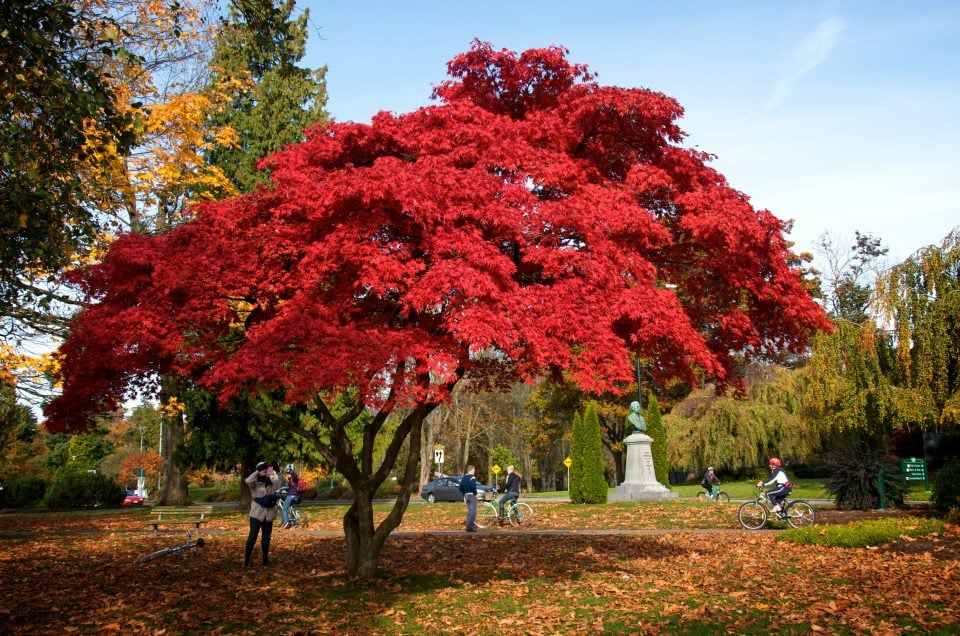
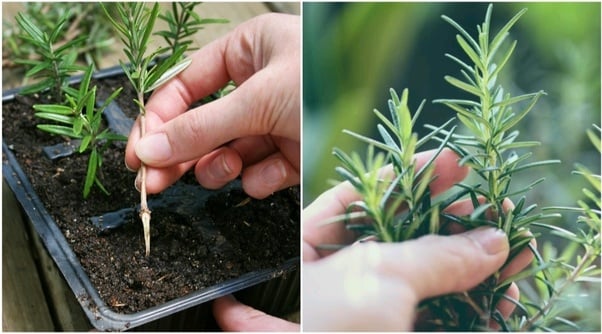
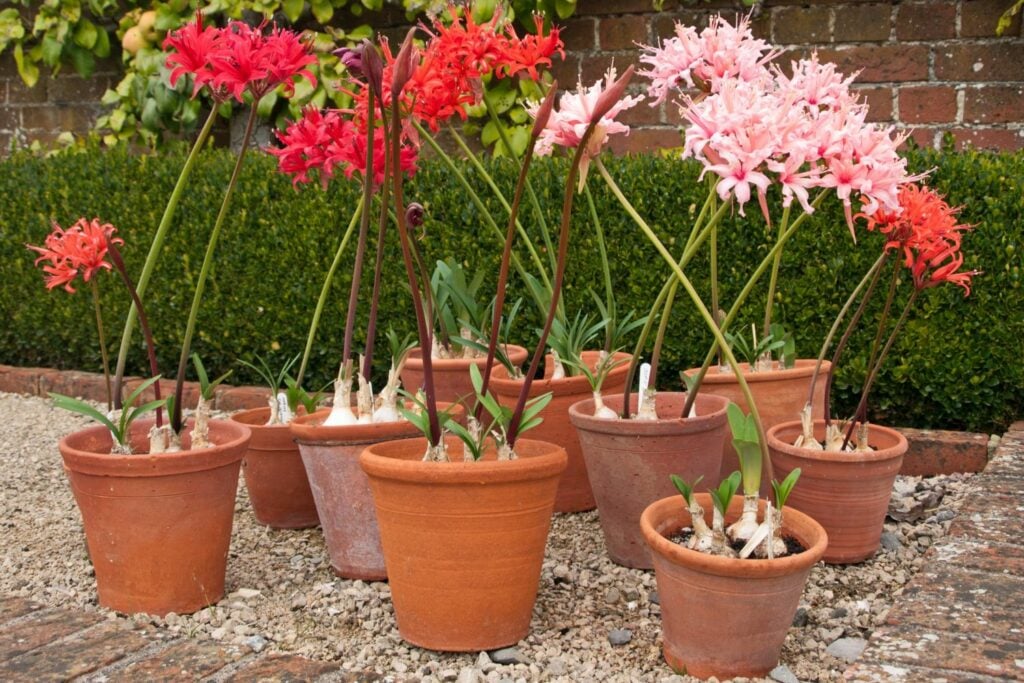
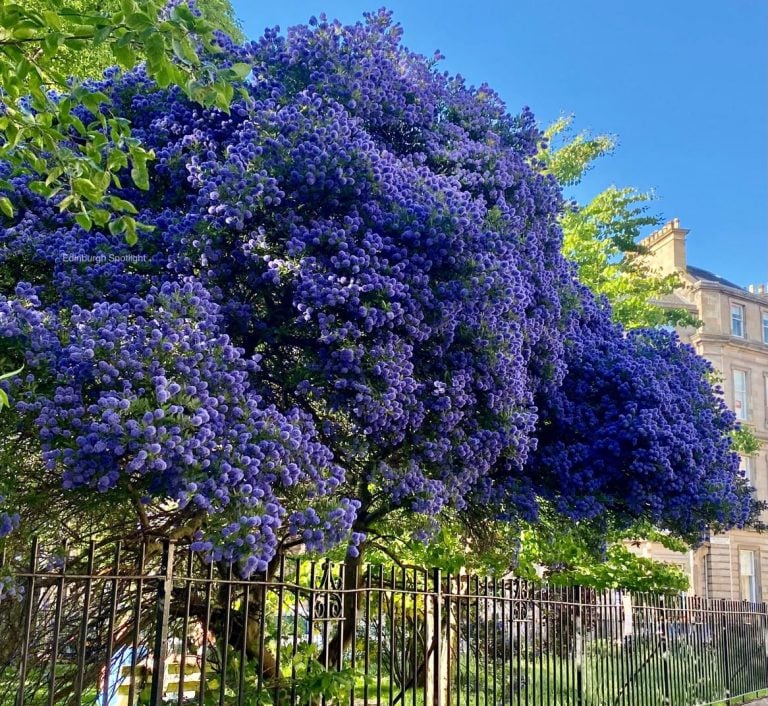
![15 Hardy Evergreen Shrubs that Are Perfect for Pots [UK]](https://staging.thearches.co.uk/wp-content/uploads/Evergreen-Shrubs-That-Are-Perfect-For-Pots.jpeg)
